1. The Naked Mole Rat

The naked mole rat is a fascinating creature that thrives in the darkness of underground tunnels. Native to East Africa, this small, hairless rodent lives in large colonies and is known for its impressive ability to survive in almost total darkness. Naked mole rats rely heavily on their senses of touch and smell to navigate the dark tunnels, where they spend most of their lives. Their vision is incredibly poor, and they actually rely on their whiskers to detect changes in their environment. These creatures have adapted to the dark by developing a highly social structure, with a queen that controls the colony and workers who perform specific tasks. Naked mole rats also have an extraordinary resistance to cancer, making them a subject of scientific study. Their ability to thrive in such a harsh environment showcases just how incredible nature can be when it comes to overcoming challenges. These blind rodents are highly social and cooperative, and their colony structure allows them to efficiently forage and tunnel. With specialized physical adaptations, such as tough, sharp teeth for digging, they have evolved to meet the challenges of life in complete darkness. They are one of the few mammals that live in subterranean environments for their entire lives, a true marvel of nature’s adaptation to darkness.
2. The Cavefish

Cavefish, or blind cavefish, are a group of fish species that live in the pitch-black caves of various parts of the world. These fish have evolved to thrive in complete darkness, losing their eyesight over generations. Instead of vision, cavefish rely on their other senses, such as echolocation, to navigate through the dark, murky waters of underground caves. Their lack of eyes is a clear adaptation to their environment, where the lack of light renders sight unnecessary. Cavefish have also developed other remarkable features, such as enhanced sensory systems that allow them to detect movements in the water, helping them find food and avoid predators. These fish are primarily found in the caves of North America and parts of Asia, and their ability to survive in such a hostile, lightless environment is a testament to the power of evolutionary adaptation. Over time, these creatures have not only lost their eyes but have also developed pale, almost translucent skin that reflects their subterranean lifestyle. Their reliance on other sensory cues, such as taste and touch, has made them exceptional survivors in their dark habitats. Cavefish rely heavily on the rich ecosystem found within the caves, feeding on small organisms that have adapted to the same dark conditions. These fascinating fish serve as an example of how evolution can shape organisms to meet the unique challenges of life in the dark.
3. The Olm
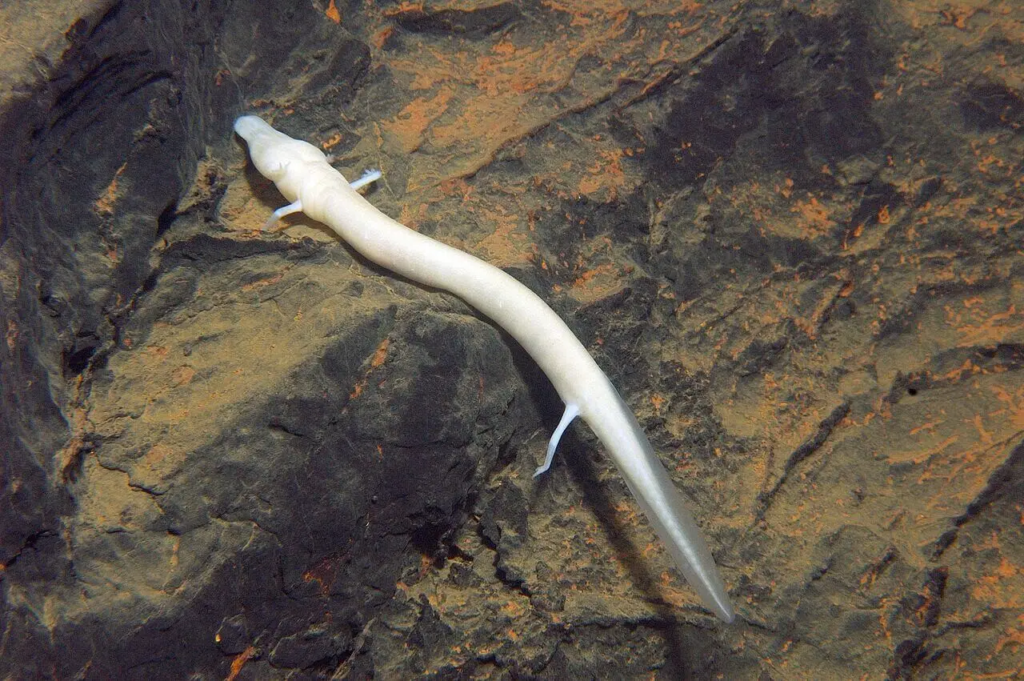
The olm is a blind, aquatic salamander found in the dark caves of southern Europe. Living in the caves for millions of years, these creatures have evolved to survive without sight. They are completely adapted to their subterranean environment, where they rely on heightened senses of smell and electroreception to navigate and locate food. Olms have specialized cells in their skin that allow them to detect electrical signals emitted by prey. These creatures are also known for their incredibly slow metabolism, which helps them survive in the dark, nutrient-poor waters where food is scarce. They are able to live for up to 100 years, an extraordinary lifespan for a creature living in complete darkness. The olm’s ability to live in such extreme conditions, relying on non-visual cues, makes it a true marvel of evolutionary adaptation. While they have tiny, underdeveloped eyes, these creatures don’t use vision at all. Instead, they rely on their other senses to guide them through the murky waters of their cave homes. Olms are extremely well-suited to their environment, with a diet of small invertebrates and the ability to survive on very little food. These remarkable salamanders are perfectly built for life in complete darkness and have become iconic symbols of cave ecosystems.
4. The Abyssal Cusk-Eel

Deep in the ocean’s abyssal zone, where sunlight never reaches, the abyssal cusk-eel thrives in total darkness. These eel-like fish have adapted to the extreme pressure, cold temperatures, and lack of light found at depths of over 10,000 feet. The abyssal cusk-eel has evolved to have large, sensitive eyes that help it detect the faintest bioluminescent light or movement in the dark waters. Interestingly, the cusk-eel’s eyes are not as developed as those of surface fish, and it relies more on its enhanced sense of touch and smell. These creatures are typically found at the ocean’s greatest depths, where they scavenge for food and evade predators. Their ability to live in such an inhospitable environment is a remarkable example of how life can adapt to even the harshest conditions. The abyssal cusk-eel’s long, slender body allows it to maneuver through the dark waters with ease. It uses its keen sense of smell to locate food in a lightless environment where most other creatures would struggle to survive. The creature’s unique features, including its ability to thrive in extreme depths, make it an extraordinary example of life in total darkness.
5. The Black Dragonfish
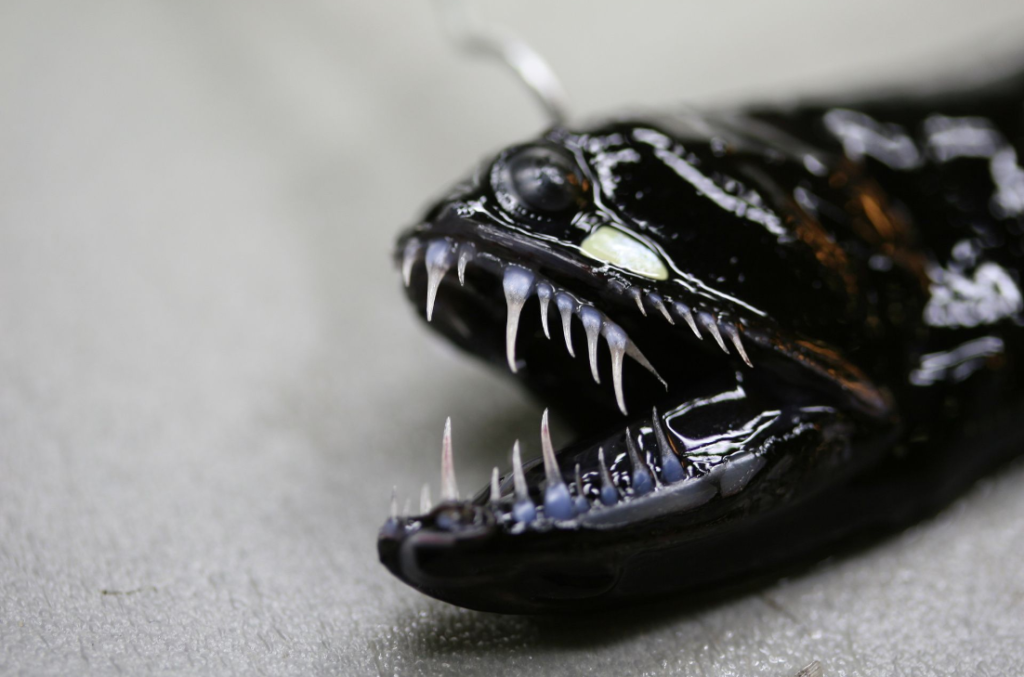
The black dragonfish is another creature that calls the dark depths of the ocean home. This predator thrives in the mesopelagic zone, which begins at around 200 meters and extends down to 1000 meters, where sunlight is sparse and darkness prevails. To survive in these conditions, the black dragonfish has developed specialized bioluminescent organs that allow it to produce its own light, helping it attract prey and communicate with others of its kind. These creatures are also equipped with large, sharp teeth that they use to catch smaller fish and invertebrates. Their ability to generate light in the pitch-black ocean is one of the most unique adaptations for survival in the deep-sea ecosystem. The black dragonfish’s bioluminescent abilities allow it to use light as a form of communication or a lure for hunting. It is not only capable of producing light, but it can also adjust the intensity of this glow to suit different needs. As a predator, it hunts smaller fish and invertebrates, drawing them closer with its glow and then striking with its sharp teeth. This stunning adaptation is one of the ways that creatures of the deep have evolved to survive in a world of eternal darkness.
6. The Indian Purple Frog

The Indian purple frog is an amphibian that spends the vast majority of its life underground in the dark, only emerging during the monsoon season to breed. Found in the forests of India, this frog has evolved to survive in complete darkness, where it lives deep within the soil. Its eyesight is practically useless, so it relies on its keen sense of smell and vibrations in the ground to navigate its dark environment. The purple frog’s round body and specialized burrowing abilities allow it to thrive in its subterranean world. When it does emerge to mate, the frogs only do so for a very short period, making it a rare and fascinating spectacle in the animal kingdom. These frogs are specially adapted to life beneath the soil, where they feed on underground insects and other small organisms. Their ability to live almost their entire life underground, avoiding predators and thriving in darkness, makes them a true marvel of nature’s adaptability. Their evolution for life in total darkness, combined with their unique breeding habits, makes the Indian purple frog a captivating example of how creatures can adapt to dark, hidden environments.
7. The Mole
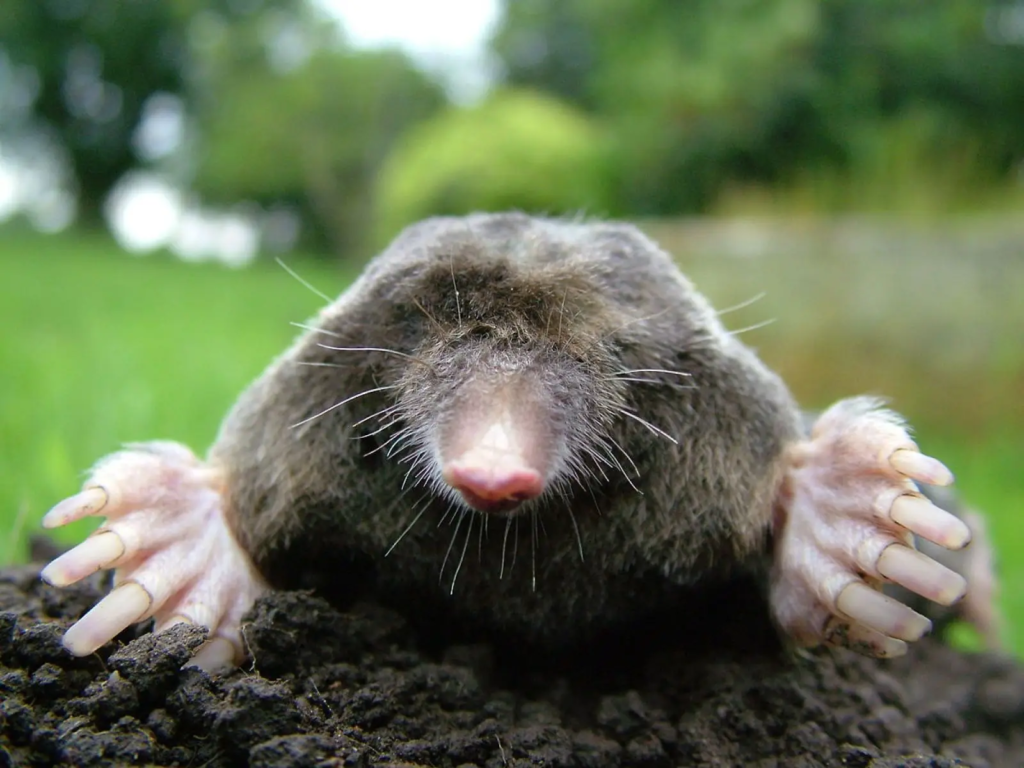
Moles are burrowing mammals that spend most of their time underground, where it is completely dark. These creatures have evolved to thrive in this subterranean world, using their highly sensitive nose and powerful claws to dig through the earth in search of food. Moles rely on their sense of touch and smell to navigate, and their eyes are tiny and often vestigial, serving little to no purpose in their dark tunnels. Their fur is velvety and designed to move easily in all directions, allowing them to push through the soil without resistance. Moles are well-adapted to their dark underground lifestyle, and their remarkable digging abilities make them masters of the subterranean world. Moles spend most of their lives alone in their burrows, using their heightened sense of smell to find earthworms and other small prey. They are excellent at digging and creating extensive tunnel systems beneath the ground. Their eyes are almost useless, as they rely on tactile and olfactory cues to survive in complete darkness. The mole’s adaptations to life in darkness allow it to find food and thrive in its hidden, dark world.
8. The Vampire Squid
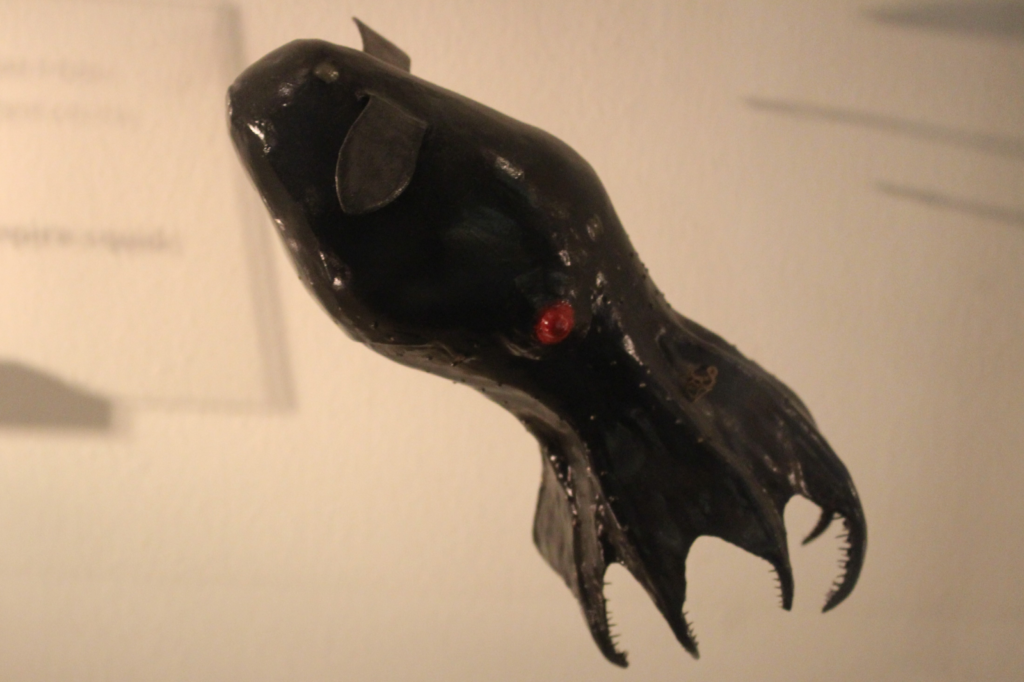
The vampire squid, despite its ominous name, is a small cephalopod that thrives in the deep, dark waters of the ocean. Found at depths of around 2,000 feet, this unique creature has adapted to the lack of light by developing bioluminescent capabilities. The vampire squid uses its glowing features to communicate and ward off predators. It survives in a region known as the oxygen minimum zone, where oxygen levels are so low that most other animals cannot survive. The vampire squid feeds on tiny organic particles, called “marine snow,” that float down from above, which it collects with the help of its tentacles. Its ability to thrive in these dark, low-oxygen depths makes it one of the most intriguing creatures of the deep sea. The vampire squid’s bioluminescence helps it stay hidden from predators by creating a glowing cloud of light that confuses attackers. It also has a unique adaptation where it can expel a glowing mucus to evade predators. This squid’s extraordinary ability to live in an oxygen-deprived environment and thrive in the dark depths of the ocean demonstrates the power of adaptation in the most extreme conditions.
9. The Great White Shark

While sharks are typically associated with being creatures of the open ocean, the great white shark also thrives in the dark depths of the ocean. Known for its hunting prowess, the great white shark has adapted to low-light conditions by relying on its other senses, such as its sense of smell and the ampullae of Lorenzini, which detect electrical signals from prey. These adaptations allow the shark to hunt effectively even in the deepest parts of the ocean, where sunlight doesn’t penetrate. Great white sharks are also known for their ability to move quickly through the water, often hunting in the twilight zone of the ocean, where the darkness helps them stalk their prey. In these dimly lit waters, the great white shark relies on its heightened senses to locate seals, fish, and other prey. Its ability to navigate and hunt effectively in the dark shows just how well adapted this predator is to different marine environments. The shark’s keen sense of smell and unique sensory abilities make it one of the ocean’s most efficient hunters, even in the depths of darkness.
10. The European Eel
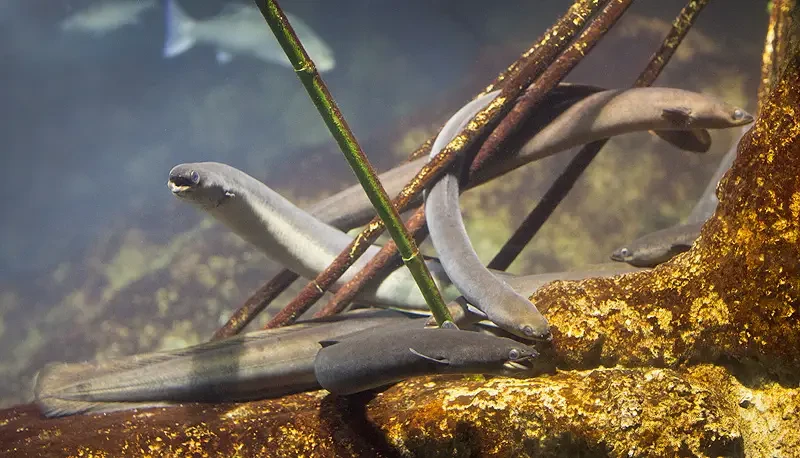
The European eel is a species that migrates from the ocean to freshwater rivers and lakes, spending a significant part of its life in the dark, muddy waters of these environments. Eels are equipped with a highly developed sense of smell and taste, which helps them find food in the murky, lightless waters. Their long, snake-like bodies allow them to easily navigate through tight spaces in dark environments, where they spend a lot of time hiding from predators. The European eel’s ability to live in complete darkness is enhanced by its lack of strong vision, relying more on other sensory systems to thrive in its habitat. These eels are born in the Sargasso Sea, and after a long migration, they spend most of their adult lives in dark freshwater habitats. They are nocturnal, hunting at night and using their keen sense of smell to detect prey. As adults, European eels live in deep, slow-moving rivers and lakes where light penetration is minimal. Their ability to survive in low-light conditions is essential for avoiding predators and hunting prey effectively. The European eel’s adaptations to darkness allow it to thrive in environments where light is scarce, and their migratory patterns showcase just how far they’ll go to ensure their survival in these conditions. Their reliance on their other senses, such as electroreception, makes them well-equipped for life in the dark. The eel’s ability to find food and thrive in such a dark, underwater world is a true testament to the wonders of evolutionary adaptation.
11. The Blind Salamander
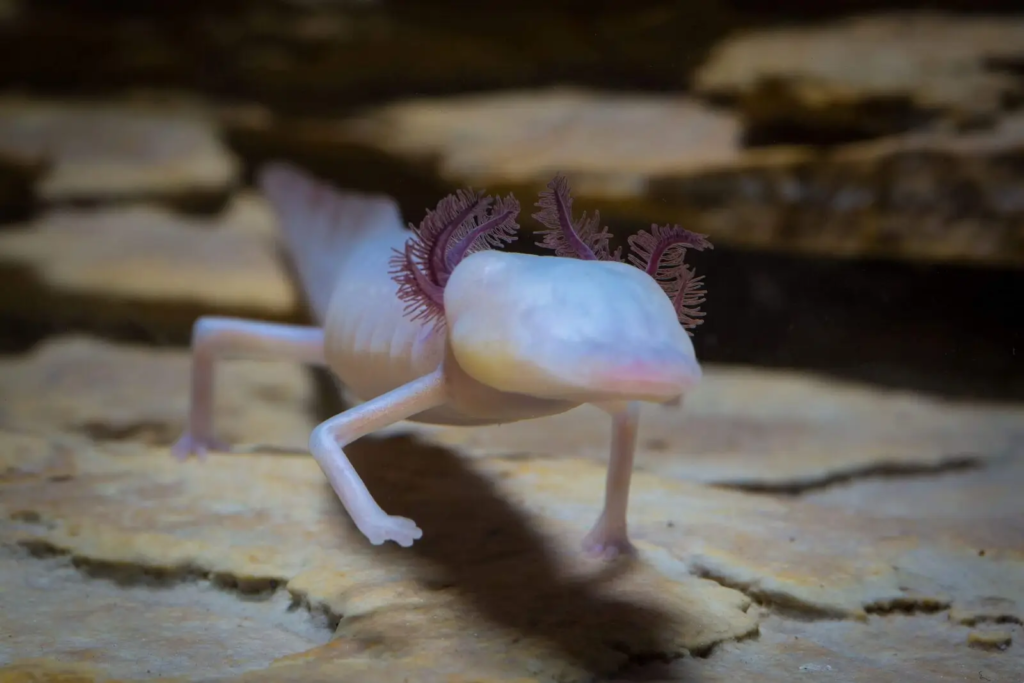
The blind salamander, found in caves across the U.S., has adapted to life in complete darkness by evolving a unique set of traits. These salamanders have no eyes and rely on their sense of smell, touch, and vibrations to detect their environment. Blind salamanders thrive in cave ecosystems where little light ever reaches, feeding on small invertebrates that live in the damp, dark conditions. Their pale, almost translucent skin is another adaptation to living in darkness, as it helps them blend into their underground surroundings. Their lack of vision is compensated by a heightened sense of smell, which they use to detect prey. Blind salamanders are well-suited to the dark, nutrient-poor caves they inhabit. These caves are often isolated, creating a unique environment where the salamanders have evolved to thrive without sight. The salamanders rely on water from underground rivers and streams to stay hydrated, feeding primarily on tiny organisms like crustaceans and insects. Their bodies have also evolved to be perfectly suited to life in complete darkness, with sensory adaptations that allow them to navigate through murky waters with ease. These salamanders are true survivors of the dark, relying on specialized senses to thrive in a world devoid of light.
12. The Fennec Fox

The fennec fox, native to the deserts of North Africa, has adapted to life in extreme environments, including underground burrows where it can escape the heat and light. These small foxes are nocturnal and spend most of their active hours during the cooler, darker nighttime hours. Their large ears help them detect prey in the dark, and they use their keen sense of hearing to navigate through their desert habitats. The fennec fox is well-adapted to its nocturnal lifestyle, thriving in an environment where darkness is essential for survival. By hunting at night, the fennec fox avoids the intense heat of the desert sun, using its heightened senses to find food such as insects and small mammals. These foxes have a highly developed sense of smell, which helps them detect prey even in the dark. Their thick fur, which provides insulation during the day, also keeps them warm during cooler desert nights. The fennec fox’s ability to live in both the harsh light of day and the darkness of night shows how adaptable and resourceful they are. Their nighttime activity ensures they avoid the many predators of the desert, and their keen hearing and sense of smell allow them to thrive in total darkness. Their ability to navigate and hunt in the desert’s darkness is a great example of how animals can adapt to thrive in dark conditions. The fennec fox’s survival skills make it one of the most well-adapted creatures in desert ecosystems.
13. The American Woodcock
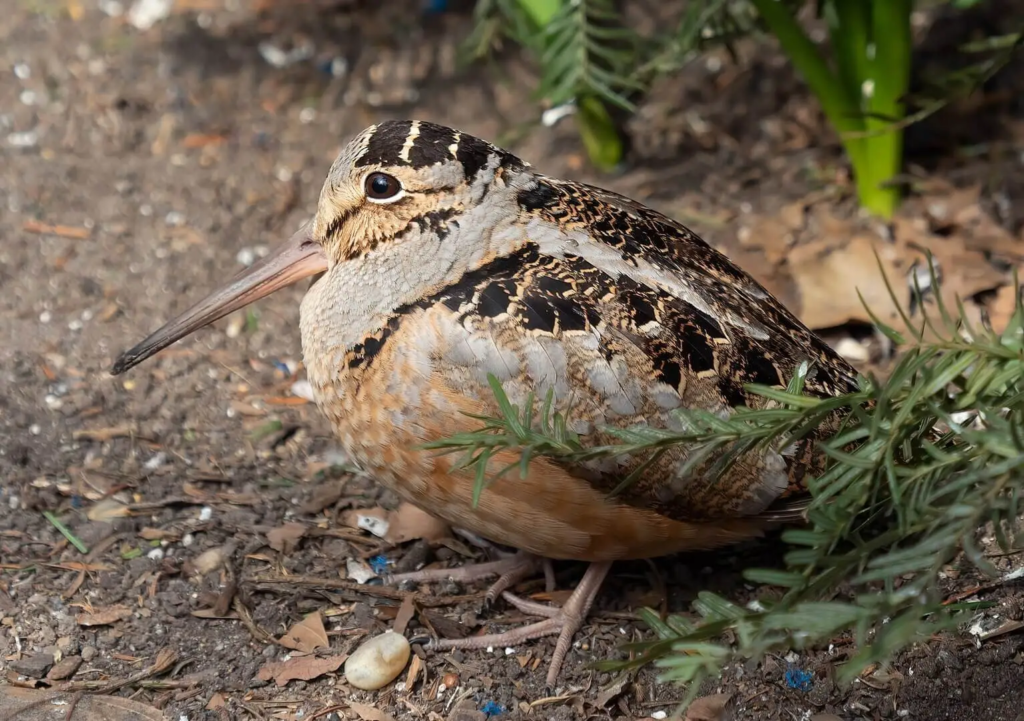
Though not typically thought of as a creature of the darkness, the American woodcock has adapted to hunting at night. These birds use their keen sense of smell to find insects and worms beneath the soil, which they hunt for at dusk and during the night. Their long bill helps them probe deep into the earth for food, and their ability to thrive in low-light conditions makes them excellent nocturnal hunters. The American woodcock is a ground-dwelling bird that is primarily active during the twilight hours, using the cover of darkness to find its food. Their large eyes are adapted to low-light vision, which is helpful for spotting prey during dusk and dawn. Woodcocks are particularly skilled at finding worms and insects in the soft earth, and they rely on their sense of smell to help them locate their prey. These birds are often found in forested areas and wetlands, where they use the dark to their advantage, evading predators and finding food. The American woodcock’s adaptability to nocturnal life allows it to occupy ecological niches that are not accessible to other birds. By foraging and hunting at night, the woodcock avoids competition with diurnal predators. Their unique adaptation to darkness allows them to thrive where others may struggle, making them an excellent example of avian nocturnal success.
14. The Barn Owl
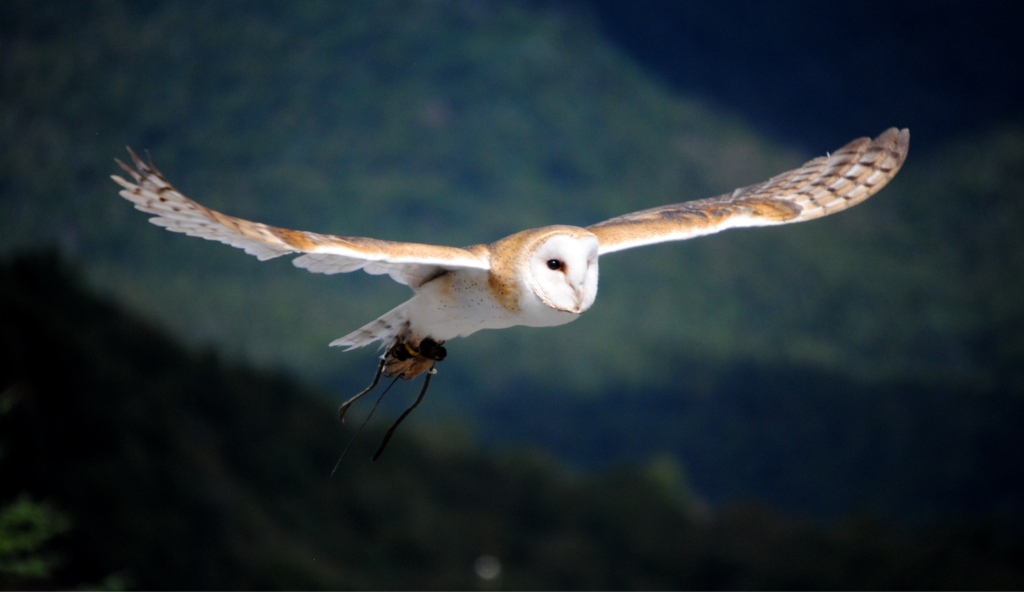
The barn owl is one of the most efficient hunters of the night, thriving in darkness where it uses its exceptional hearing to detect prey. Barn owls have specialized facial discs that help funnel sound into their ears, allowing them to hear even the faintest rustle of a mouse or rat. Their large eyes are adapted for low-light vision, allowing them to hunt effectively in the dark. Barn owls are highly skilled nocturnal hunters, and their ability to navigate and hunt in complete darkness makes them one of the best-adapted birds for nocturnal life. Their hearing is so precise that they can pinpoint the exact location of their prey, even under thick vegetation or layers of snow. This incredible sense of hearing makes barn owls one of the most successful nighttime predators. They hunt by silently gliding through the dark skies, using their keen hearing to locate small mammals. Barn owls often hunt in open fields or wooded areas, where their ability to navigate the darkness gives them a distinct advantage over other predators. They are also capable of flying silently, thanks to the structure of their feathers, which helps them avoid detection by their prey. Barn owls are a great example of how specialized sensory adaptations allow certain animals to thrive in environments with limited light.
15. The Bats
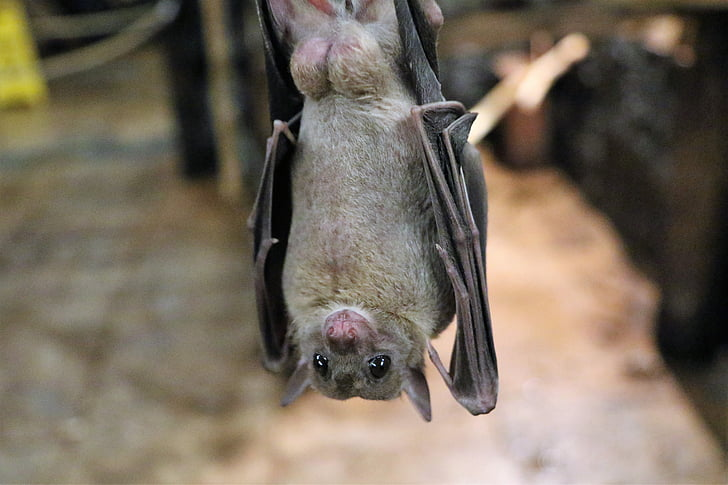
Bats are perhaps the most famous nocturnal creatures, thriving in complete darkness with their ability to echolocate. Bats use sound waves to navigate and locate prey in the dark, sending out high-frequency sounds and listening for the echoes as they bounce off objects. This ability allows them to fly through the night without relying on vision, and it helps them locate insects to feed on. Bats are found all over the world and have evolved to thrive in dark environments, where they can avoid predators and find abundant food. Their echolocation system is so advanced that it allows them to detect objects as small as a mosquito in total darkness. Most species of bats are insectivores, and they play a vital role in controlling insect populations. They are particularly active during the evening and night, when they use their sonic abilities to hunt. Some species of bats also feed on fruit, nectar, or small vertebrates, showcasing the wide range of adaptations within the bat family. Their ability to navigate in complete darkness makes them masters of nocturnal life, and their echolocation ability is one of the most remarkable features in the animal kingdom. Bats demonstrate just how evolution can mold animals to thrive in environments where light is scarce or nonexistent.


